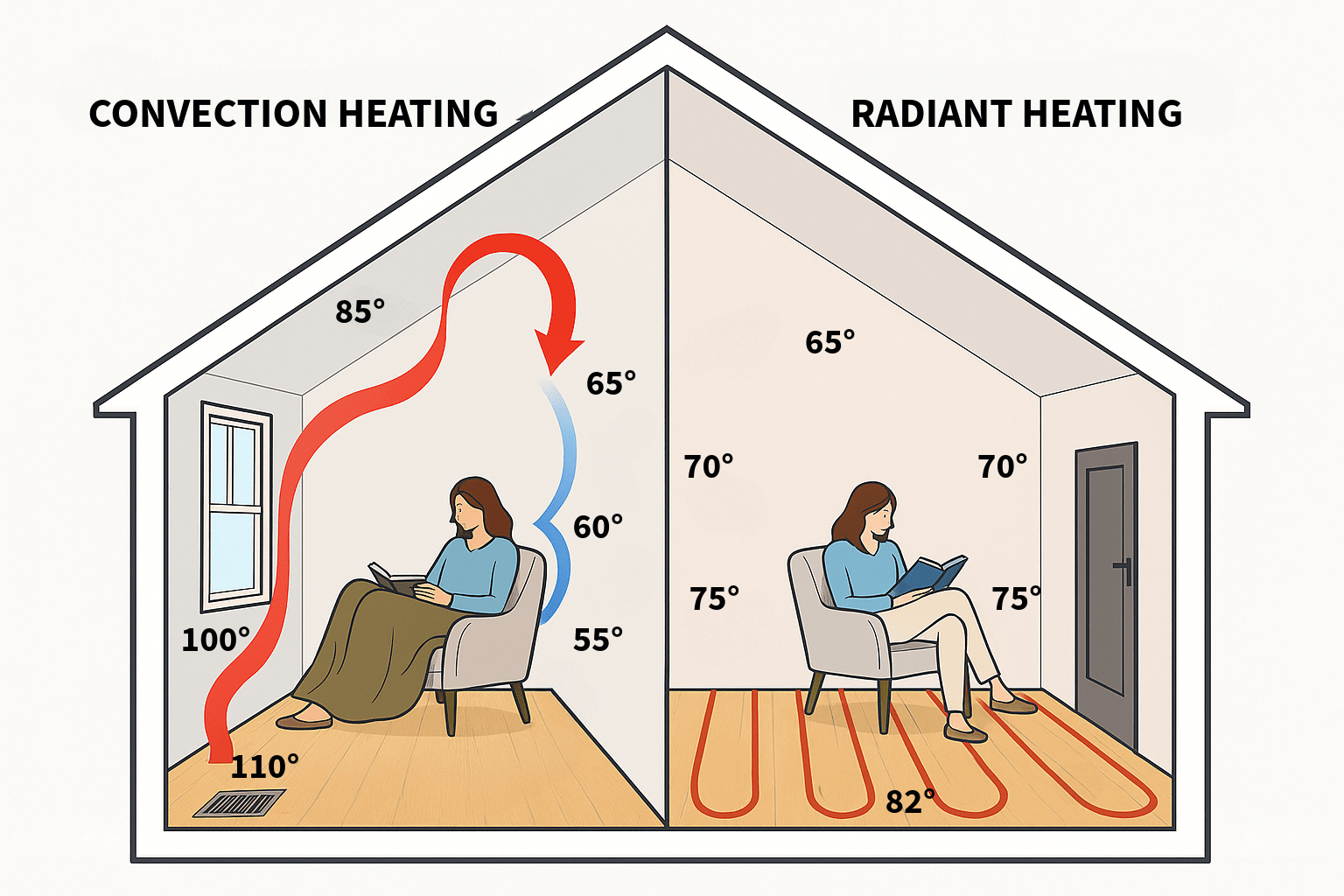Radiant vs. Convection Heating: Which Is Better for Your Home?
Which Heating Works Better for Homes: Radiant or Convection?

When it comes to heating your home, two common options are radiant floors and convection heaters. Both can keep you warm, but they work in very different ways — and one may be better suited to your comfort, energy efficiency, and long-term goals.
In this blog, we’ll break down how each system works, compare their pros and cons, and explain why radiant heating often delivers superior comfort.
How Radiant Floor Heating Works
Radiant vs. Convection Heating: Which Is Better for Your Home?
Radiant floors warm surfaces and people directly, similar to how the sun warms your skin. In a hydronic radiant floor heating system:
- Warm water flows through PEX tubing embedded in or under the floor.
- The floor surface radiates heat upward.
- Warmth is evenly distributed, with no drafts or cold spots.
Key Benefits of Radiant Heat:
- Even, consistent warmth throughout the room.
- Feels comfortable at lower thermostat settings.
- Silent operation with no moving air or dust circulation.
- Works well with various flooring types (tile, hardwood, LVP, carpet, etc.).
How Convection Heating Works
Convection heaters warm the air in the room by moving it past a heated element or through ductwork. Examples include:
- Forced-air furnaces
- Baseboard heaters
- Space heaters
The warm air rises, cooler air sinks, and the cycle repeats.
Key Benefits of Convection Heat:
- Can heat a space quickly.
- Often lower upfront cost.
- Widely available in portable and built-in models.
Radiant vs. Convection: Side-by-Side Comparison
| Feature | Radiant Heater | Convection Heater |
| Heat Delivery | Directly warms surfaces & people | Warms air, which circulates in the room |
| Comfort | Even heat, no drafts, warmer floor | Uneven warmth, potential hot & cold spots |
| Air Quality | No air movement, no dust circulation | Moves air, can spread dust & allergens |
| Energy Efficiency | Feels warmer at lower settings | Often needs higher settings for comfort |
| Noise | Silent | Fans/blowers may produce noise |
| Ideal Applications | Whole-home comfort, basements, remodels | Quick spot heating, supplemental heat |
Why Radiant Heating Wins for Whole-Home Comfort

While convection systems can be effective, radiant heating offers:
- Superior comfort – Heat is evenly spread from the floor up.
- Better efficiency – Lower thermostat settings save energy.
- Design flexibility – No bulky radiators, vents, or baseboards.
- Healthier air – No fans blowing allergens or dust.
With WBI radiant panels, you can combine comfort and efficiency in any home:
- RadiantBoard – Perfect for wood subfloors.
- RadiantBoard EPS – Adds insulation for concrete floors.
- ThermalBoard EPS – High-performance heating with a durable surface.
- InsulHeat – For under-slab new construction.
Final Thoughts
If you need quick spot heating, a convection heater can do the job. But if your goal is long-term comfort, energy efficiency, and a healthier living environment, radiant heating is the clear winner.
Ready to experience the difference?
Contact WBI to explore radiant panel options for your home.
radiant vs convection heater, radiant heating benefits, convection heating drawbacks, hydronic radiant floor heat, WBI radiant panels, RadiantBoard, ThermalBoard EPS.